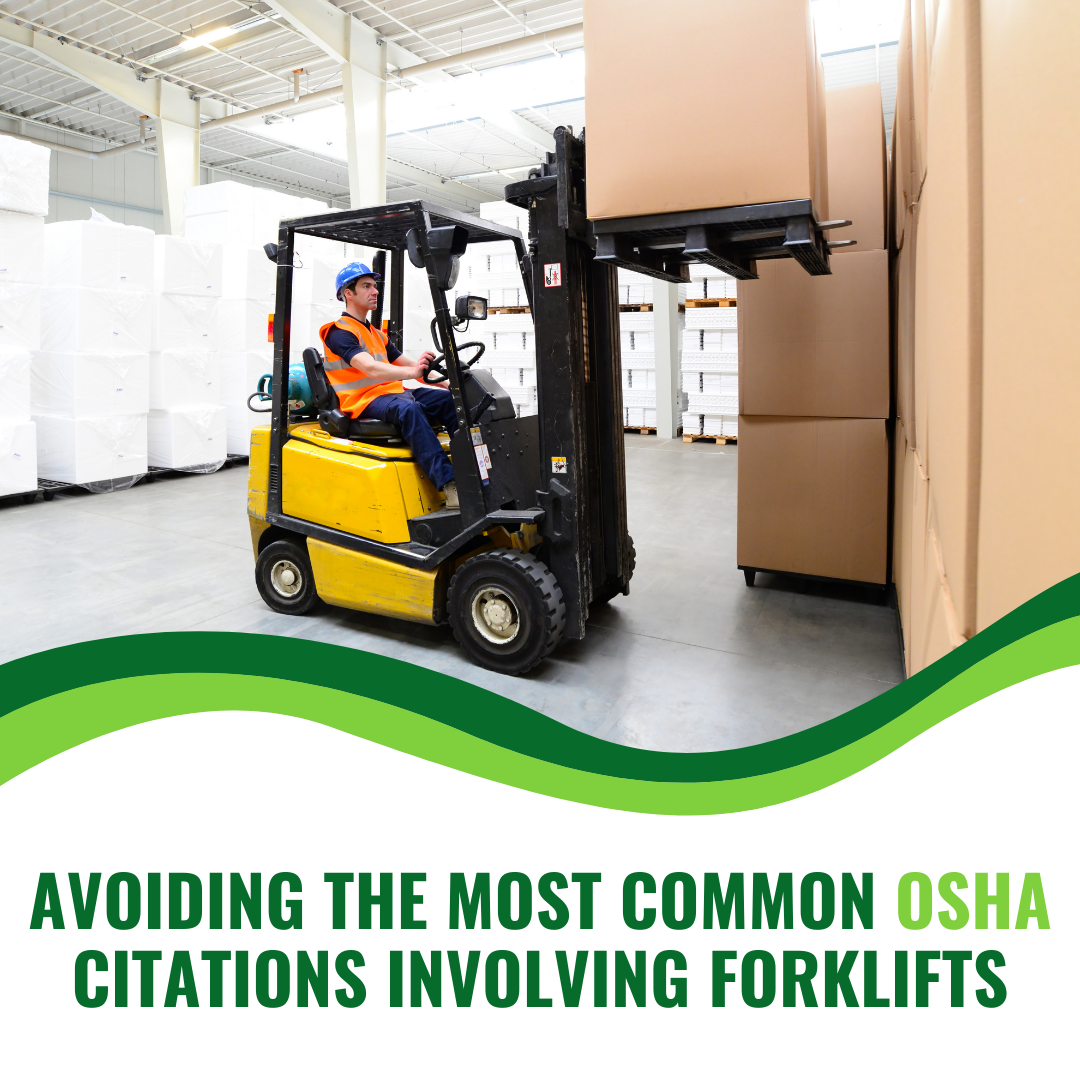We use cookies to make your experience better. To comply with the new e-Privacy directive, we need to ask for your consent to set the cookies. Learn more.
Avoiding the Most Common OSHA Citations Involving Forklifts
Forklift violations regularly appear on OSHA’s annual list of most frequently cited standards, and for good reason: Lift trucks are serious equipment, and misuse can easily lead to an onsite injury. For the 2019 fiscal year, “powered industrial trucks, general industry" was the 7th most cited set of standards, right below “ladders, construction" and ahead of “fall protection - training requirements.”

That doesn’t tell the whole story. In 2019, OSHA counted 2,993 forklift violations, noting that “each year, tens of thousands of injuries related to powered industrial trucks … occur in US workplaces.” The administration notes that employees are often injured when lift trucks are inadvertently driven off of loaded docks, when they’re struck by lift trucks, or when they fall off of pallets, tines, and other elevated surfaces.
Of course, managers should avoid any OSHA violation, regardless of whether those violations are likely to result in fines or injuries, but forklift violations are especially serious considering the hazardous nature of the equipment. OSHA’s lift truck guidance is largely covered under 29 CFR 1910.178, though other general standards apply. Regularly reviewing the standards can help to create a safer, more productive workplace.
Some common practices that can prevent OSHA forklift violations include:
-
Inspect forklifts regularly. Failure to perform pre-operation inspections can result in a violation, and if lift trucks are found to be defective or in need of repair, the business could incur another violation, per 1910.178(q)(1). Trucks that are damaged or defective should be taken out of the fleet until they’re repaired or replaced.
-
Take precautions when using forklifts on ramps. While it may seem obvious to mark travel paths and use ramps in accordance with the manufacturer’s recommendation, operators sometimes ignore these considerations.
Managers should ensure that operators understand OSHA’s requirements and recommended practices. Use high-quality steel dock ramps (such as the BHS-DR) with a gradual grade, preferably with curb guards to prevent accidents.
-
Ensure adequate fall protection. 501 requires guardrails, safety net systems, or personal fall arrest systems for employees working six feet or more above a lower level.
That applies to employees on elevated work platforms, too — regardless of the time they’re spending on those platforms. When lifting workers, managers should ensure that the lift truck is appropriately outfitted and that any forklift attachments have been properly engineered for such a purpose.
-
Ensure lift trucks have appropriate protections against fire hazards. 178(g)(2) notes that businesses need to provide fire protection facilities, while 1910.178(a)(1) sets out the safety requirements for fire protection for both electric and gas-powered forklifts.
Fire extinguishers like the BHS FE-20 should be readily accessible, along with eyewash stations and other emergency equipment. Just as importantly, emergency equipment needs to be visible, and workers should understand proper response procedures.
-
Train operators to operate lift trucks safely.178(l) requires that trainees only operate lift trucks under direct supervision and only “where such operation does not endanger the trainee or other employees.” 1910.178(l)(3) lays out requirements for training program content, and OSHA offers an e-tool to assist in training procedures.
Regular refresher training should be provided, particularly for employees that are assigned to drive a different type of truck or when a workplace condition changes that could affect the safe operation of the truck. Each operator’s performance needs to be measured at least once every three years — keep extensive documentation of certification procedures and ensure that employees understand the importance of training and certification. Failure to provide refresher training can easily result in a violation and a fine.
-
Train employees to follow safe battery handling procedures. Training is just as important in the battery room. All employees should know how to charge, move, and store batteries safely — and what to do if an electrolyte spill occurs.
Managers should invest in safe, ergonomic battery handling equipment. 29 CFR 1910.178(g)(5) notes that “reinstalled batteries shall be properly positioned and secured in the truck,” and proper outfitting makes all aspects of battery room management safer and easier. Our article on powered and manual battery handling equipment provides additional guidance for choosing solutions that work for battery rooms of all sizes.
-
Ensure that forklift batteries have adequate ventilation.178(g)(2) also requires facilities to be provided “for adequate ventilation for dispersal of fumes from gassing batteries.” As fleets grow, managers sometimes fail to account for increases in hydrogen gas, which can lead to serious explosive hazards.
We provide a hydrogen gas ventilation calculator to make planning easier. Ensure that all battery rooms have hydrogen gas detectors with audible alarms, along with hydrogen exhaust fans like the BHS HEF-1 to prevent gases from building up to a dangerous level.
For more detailed information on battery room ventilation code requirements, check out our article on the subject.
Finally, All workers should understand safe forklift operating practices, regardless of whether they actually operate the equipment. Workplace safety is a team effort, and even well-trained operators make occasional mistakes. When a facility has appropriate safeguards in place — and when all employees understand the purpose of those safeguards — hazards can be mitigated and injuries can be avoided.
Note: These practices won’t ensure complete compliance with OSHA regulations, and employers should regularly review the full text of 29 CFR 1910.178. Regulations differ from state to state, and this article should not be interpreted as legal guidance.
